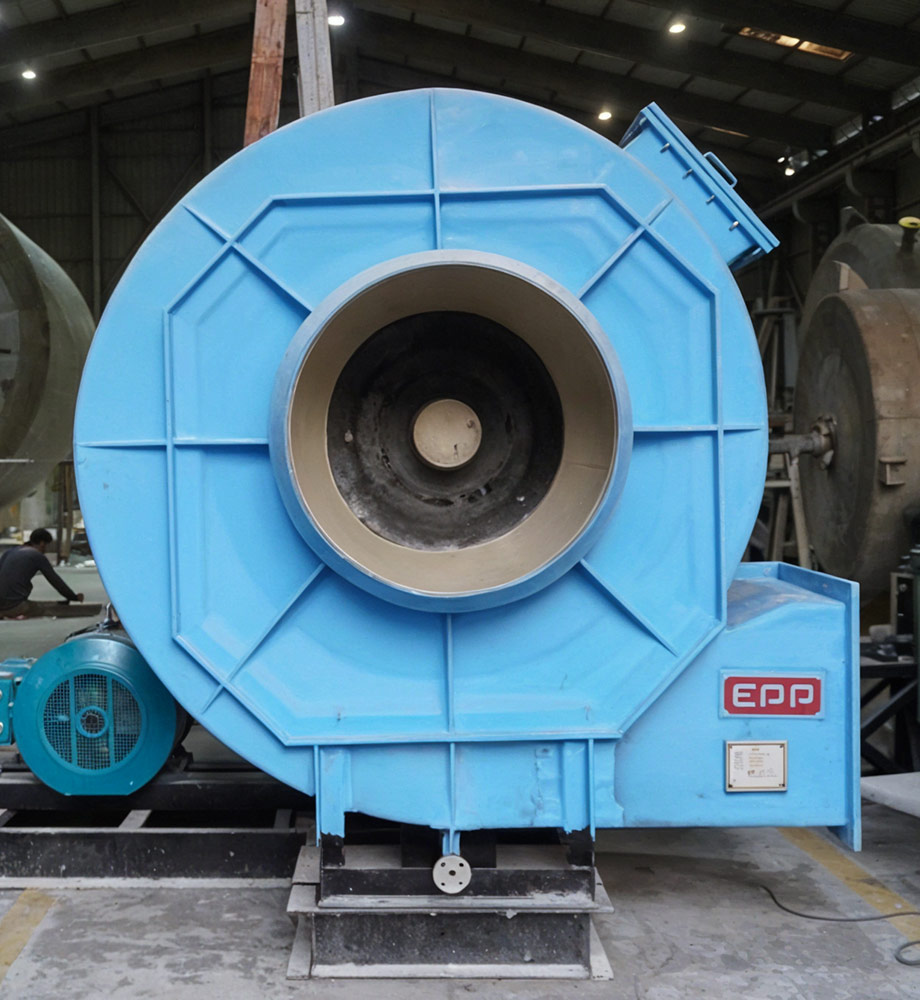Key Features
- Corrosion-Resistant Construction: Fiberglass-reinforced housings and impellers withstand sulfates, nitric/chloric/hydrochloric acids, ammonia, solvents and other caustic vapors.
- Fire-Resistant Resins: Many FRP fans use fire-retardant polyester or epoxy, meeting Class 1 flame ratings, for added safety in explosive atmospheres.
- Variety of Types: Available in centrifugal configurations (high-pressure, backward-curved, radial blade) and axial styles (tube, vane, upblast). Can be direct-drive or belt-driven.
- Lightweight Housings: Fiberglass casing is lighter than steel, reducing the weight on support structures.
- Quiet Operation: Well-designed FRP fans often run smoothly and quietly due to balanced impellers and stiff housings.
Benefits
- Superior Chemical Resistance: FRP fans handle corrosive exhausts far longer than stainless steel or aluminum fans. In fact, the combination of glass fiber and inert polymer matrix resists chemical attack better than metal alloys in many cases.
- Cost-Effective: Compared to exotic alloy fans, FRP fans often cost less while delivering similar longevity. Over their service life, they require fewer rebuilds or replacements.
- Low Maintenance: No rusting means bearings and shafts remain cleaner; fewer washdowns are needed. Teflon or stainless bearings are standard to match the FRP’s corrosion immunity.
- High Reliability: FRP blower housings maintain tight tolerances, preserving air performance over time. Even in wet or highly humid duty, FRP does not swell or warp.
Applications
FRP blowers and fans are used wherever corrosive or damp air must be moved. Typical industries include chemical processing, petrochemical plants, offshore oil & gas, water/wastewater treatment, and HVAC for corrosive atmospheres. They serve as exhaust fans for acid fume enclosures, scrubber blowers, ventilation for plating tanks, and general ventilation in facilities handling chlorides or fertilizers. Government agencies and defense facilities often specify FRP fans for environments where stainless steel corrosion has been a problem.
Technical Specifications
FRP fans are rated by airflow (CFM), static pressure (inches of water), and speed (RPM). Impeller sizes range from a few inches to several feet in diameter. Typical FRP blowers can handle temperatures up to around 250°F (120°C) depending on resin, and pressures up to roughly 10″ w.g. (0.3 kPa) for duct fans (higher for special blowers). Fan rotation and motor can be selected based on user preference (e.g. all-electric, explosion-proof motors).
Unique Selling Points
FRP fans offer the “best of both worlds” for corrosive air handling: they match stainless steel for chemical resistance and often outperform it on acids, while costing a fraction of exotic metals. The housings and blades are molded to exact shapes to optimize airflow. A key USP is the FRP fan’s built-in insulation (non-conductive), which can reduce electric spark risks. FRP fans also maintain performance in tight spaces or complex duct systems where metal fans might fail under humidity. Their virtually indestructible fiberglass casings and long-service life make them a top pick for reliable pollution-control fans.

